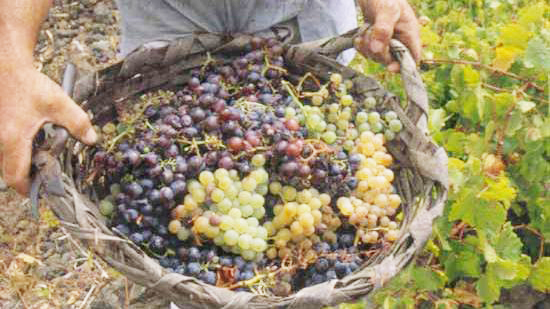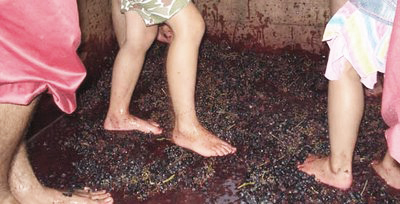Spanish Wines History
This page is about the later part of Spanish wine history. If you want to find out how it all began, why don't you check our page on the early history ofSpanish wines.
The phylloxera and the Civil War: the destruction of Spanish wines

With the arrival of the Industrial Revolution came better machines for wine making, and Spain, who hadn't gone through it yet, saw a decline in the exportation of its wines. There was a brief respite when the phylloxera destroyed most of the European vineyards during the 19th century. It was a dire time for Europe, and Spain was its salvation. The plague still hadn't reached the Spanish vineyards, so there was plenty of wine to export. During this time, Spanish wines reached every corner of Europe, and they acquired quite a fame.
Some French wine makers crossed the Pyrenees and arrived at the north of Spain, bringing with them new tools, methods and, of course, varieties different from the Spanish grapes. The north of Spain, specially Navarre and the Basque Country, was specially benefited by this and their wine tradition is much richer during this time than the rest of Spain's, because they had access to the great French wine making culture.
However, luck didn't last long, as the phylloxera arrived in Spain later that century. Due to the country's geography, the plague took longer to spread, so when things started to look really dire (the plague reached La Rioja in 1901) the cure had already been discovered. It consisted in grafting tougher vines, the ones that could resist the bug, to weaker vines, to create a hybrid that could stand against the epidemic. This saved the Spanish vineyards, and the first designation of origin was established in La Rioja in 1926. If it weren't for this remedy, it's probable that wine tradition in Spain wouldn't be as important now.

The wine making industry would still go through more problems before getting to its modern day prestige. World War I paralyzed the European trade market, which made exporting anything almost impossible. Then the Spanish Civil War froze the country, and while the different sides were fighting each other the vines were left unattended, like those in Madrid, and some of them were even torn up to plant wheat and other cereals used in basic human foods. But even when the war was over, the tragedies didn't stop: The II World War immobilized the European market again and made it impossible for the industry to take off until the 50s. It was at this time that some of the vineyards were replanted and the wine tradition began to be restored in some parts of Spain.
Spanish wines make history
The 50s saw the revival of the wine tradition in Spain and with the 60s came the international rediscovery of Jerez and Rioja; but the real resurgence arrived when Franco died in 1975 and the transition to democracy began. The economic freedom gave way to a growth of this market between the middle Spanish classes and the revolution came to the wine industry at the beginning of the 80s. Things were going well, and they went better when Spain became a part of the European Union in 1986, which brought economic aid to the Spanish wine sector. The 90s gave way to the acceptance in the use of international varieties of grapes like the Cabernet Sauvignon and Chardonnay, and the ban on watering (which had been imposed during a drought period) was lifted in 1996. This meant new places to plant, more grape varieties and more profitable ways of production. The golden age of Spanish wine had started, and still goes on today. With such an old wine tradition, who can resist Spanish wines?
Today, Spain is still one of the main wine producing regions in the world, with wines that are highly revered by international conoisseurs. Spanish wine production forms a vital part of the country's economy, both in terms of exportation and tourism. So why not contribute to keeping this great history alive by enjoying a glass of great Spanish wine in Spain! Better still, why don't you consider taking a tour around a Spanish winery so that you can experience this history yourself!
Spanish Wine History
Spanish Wine Regions and DO
Spanish Wine Tours
Top Spanish designations of origin
Best Spanish Wines
Spanish Wine Production
Spanish Wine Types
Spanish Grapes
Spanish Sparkling Wine: Cava
Sherry Wine
Spanish Wine Cocktails
Spanish Wines in the World
Spanish Wine Prizes
Enotourism
Spanish spirits and liquors
Argentina Wines
Chilean Wines
Other sites